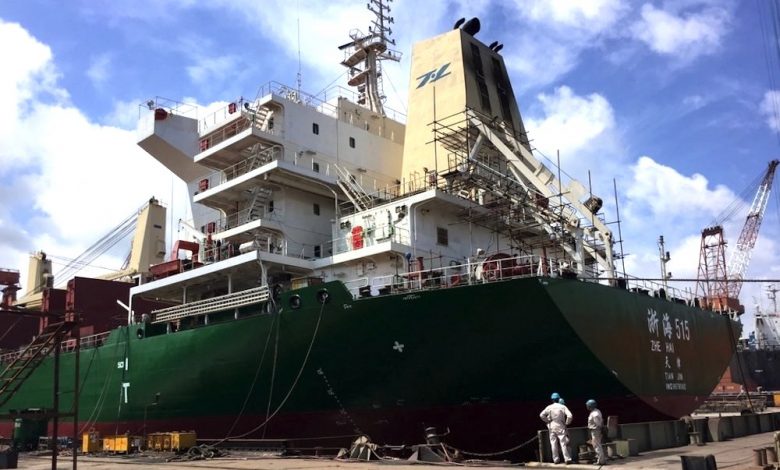LNG retrofits touted as way to meet IMO 2030 targets

Newport Shipping, a UK-based ship repair coordinator, is touting LNG conversions as a new angle for business in the post-scrubber era.
The company, which operates a strategic network of 12 shipyards with 28 docks, is pushing LNG propulsion retrofits as a way to meet the International Maritime Organization’s (IMO) 2030 goals to slash emissions by 40% compared to 2008 levels.
“Retrofitting all the vessels currently at sea with greener technology is paramount if we want to attain the scale of emission-cutting that is required. As we see it now, apart from agreeing on the optimum fuel option, the other major challenge is that the agreement and implementation of the environmental agenda is governed by financial metrics,” commented Lianghui Xia, Newport’s managing director.
Newport is offering clients seeking to make the switch to LNG a suite of full-service options accompanied by supporting financial packages.
“We offer our turnkey solution with a five to seven year payment plan without fixed vessel mortgage collateral. This is a cost-effective solution to alleviate the upfront financial burden imposed on shipowners today so they can plan for tomorrow,” Xia said.
Newport’s turnkey solution encompasses equipment procurement, full-scope design work, on-site project execution at the shipyard with deferred payments. Xia told Splash his company was in dialogue with a number of owners at present over a first retrofit.
The agreement and implementation of the environmental agenda is governed by financial metrics
“There are almost 100,000 ships trading in the world and the age profile is fairly young so we estimate a large number of owners and charterers will be interested to have less CO2 pollution in the world,” Xia said, adding: “The market potential is there and it is huge. LNG looks to be the most suitable transit fuel at the moment.”
A study published by the University of Manchester last month stressed shipping must retrofit today rather than count on the next generation of vessels to meet carbon targets. The study did not however suggest LNG was the best choice for retrofits, preferring to focus more on renewable sources of power.
Indeed, LNG’s lustre as shipping’s interim fuel of the future has been attracting plenty of negative press in recent months, just as the supply infrastructure for the fuel finally comes online.
A report published in January from the International Council on Clean Transportation (ICCT) argued that ships fuelled by liquefied natural gas (LNG) do not deliver the emissions reductions required by the International Maritime Organization’s initial greenhouse gas (GHG) strategy, and that using LNG could actually worsen shipping’s climate impacts.
The 40-page report, commissioned by international environmental organisation Stand.earth, stated that high-pressure injection dual fuel (HPDF) engines using LNG emit 4% more lifecycle GHG emissions than if they used marine gas oil (MGO). The most popular LNG engine technology is low-pressure dual fuel, four-stroke, medium-speed, which is used on at least 300 ships. Results from the study showed this technology emitted 70% more lifecycle GHGs when it used LNG instead of MGO and 82% more than using MGO in a comparable medium-speed diesel engine.
“Continuing to invest in LNG infrastructure on ships and on shore might make it harder to transition to low-carbon and zero-carbon fuels in the future,” the report stated.
IMO’s 2030 targets are under pressure to be tightened with many shipping companies reporting recently how they have already exceeded the stipulated 40% cuts.
